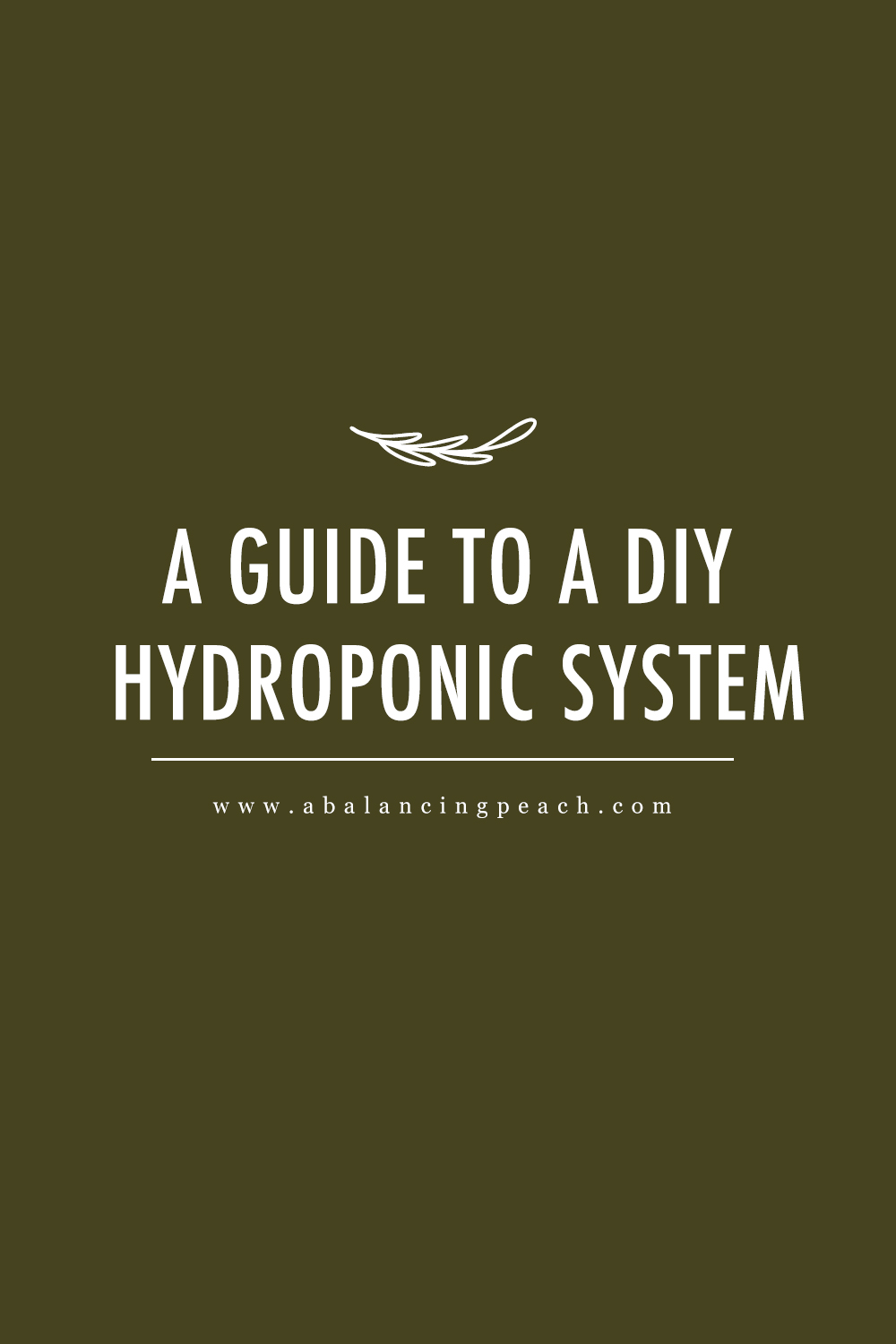I don’t think it needs to be said, but it’s been a weird month. Scratch that – a weird year. Our new reality has left me feeling like I’m constantly on my back foot. Though I have to say our household lucked out fairly well with both of our jobs still in place, meaning our home has stayed somewhat normal. And luckily we started a DIY hydroponic system before all the chaos that has kept us entertained and our meals fresh!
But what exactly is hydroponics?
Good question! Hydroponics is simply growing plants without soil and using a minerals solution for nutrients. There are a few different types of hydroponics, but the simplest is simply using distilled water for the solution.
Hydroponics are great for people, like me, who live in smaller apartments because you need less space than traditional planters. The plants are still able to grow and provide a yield greater than traditional planters.

Supplies
Tall Glass Planter
Net Pot
Growth Media – Clay Pebbles
Coconut Pith
Activated Carbon
Seeds
Fertilizer
Spray Paint (whatever color you prefer)
The glass planter needs to be spray painted due to the roots of the plant growing out the bottom of the net pot. Plants need sun, just not on their roots.
In order to simplify our system, we decided to use the Kratky method vs. a more traditional wicking method. The Kratky method is very simple. The only rule you have to abide by is making sure the bottom of the net pot is submerged in water at first. Doing this will entice the roots to grow towards the water.
The water level will go down as the plant requires more water and will leave an air gap. This air gap is crucial. The gap encourages ‘micro roots’ to grow and these will help the plant take in oxygen. When you end up refilling the planter with water, you’ll want to leave a two inch gap between the top of the water and the bottom of the net pot. Other than that you can let your plant sit and grow on it’s own.

Step-by-step
As weird as this set-up can seem, I promise it’s surprisingly simple. It just requires unique items that few people have lying around. (I feel like it’s a fair bet that very few have coconut piths lying around.)
Step One
Start off by spray painting the tall glass planter. Make sure the paint is applied so the planter is completely opaque.
Pro-tip: Mask off a strip of the glass planter before you paint it. That way you’ll have a small window to view the water level once it’s all together.
(If you aren’t loving the idea of a lot of mason jars, you can also use large vases that have a smaller opening. You’ll just have to track down different diameter net pots to fit the vases.)
Step Two
From there simply fill the net pot with clay pebbles (or your growth media.) You want the pebbles to be about 1/4″ away from the top of the net pot to allow for room for the seeds + coconut pith. You’ll also want to clean the pebbles by running water over them for about 30 seconds.
Step Three
Now take one coconut pith and hold it while you run water over it. The pellet will start to expand and once it’s fully broken down will serve as the seed starter. Place the expanded coconut pith over the top of the pellets as evenly as possible. Again try to keep the coconut coir as level as possible with the top of the net pot since this is where your plants will be.
Step Four
Next, add the seeds to the coconut pith. Ta-da! Your hydroponic system is essentially complete.
You simply need to add the net pot full of clay pebbles, coconut pith, and seeds to the painted glass planter. DON’T FORGET – your net pot needs to sit in water at first to encourage the roots to grow down. As your plant grows it will absorb the water causing the water supply to decrease.
Keeping Your Hydroponic System Healthy
Congrats! Your seeds have sprouted and you now have roots growing through the net pot bottom.
So how do you keep your system happy and healthy?
Aside from not letting the water level completely disappear in the planter and allowing the roots to dry out, you will need to fertilize your DIY hydroponic system. We’ve found that fertilizing our system every other time we have to refill the planter is a great fertilizer schedule.
We made the big mistake of using an organic fertilizer the first time around in our DIY hydroponic system. The hydroponic system requires the trace mineral elements to be much higher than soil nutrients and for the fertilizer to be soluble. We use this one and have seen nothing, but healthy and happy plants.
Love plants, but not sure this DIY hydroponic system is for you? Totally fair! I highly suggest to anyone wanting to try hydroponics to buy from Modern Sprout at first. They have great hydroponic systems that are easy to learn from and have a bit more style than painted mason jars.
Whether you end up giving this DIY a go or buying a system, I hope it gives you something to look forward to during this odd time.


A Guide to a DIY Hydroponic System
VIEW THE COMMENTS